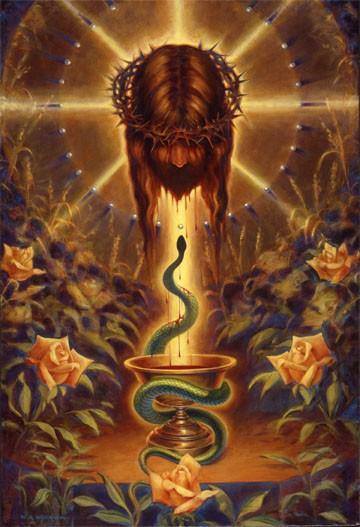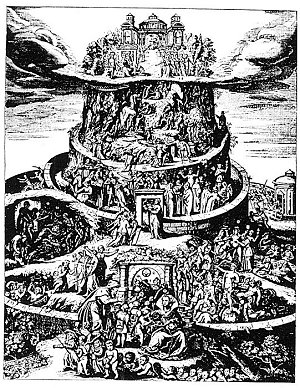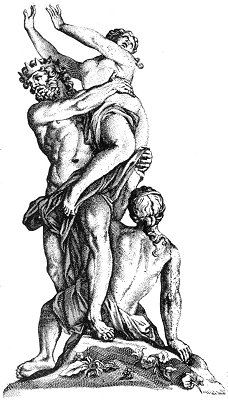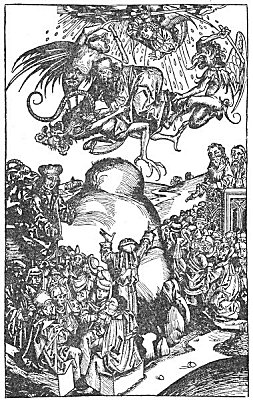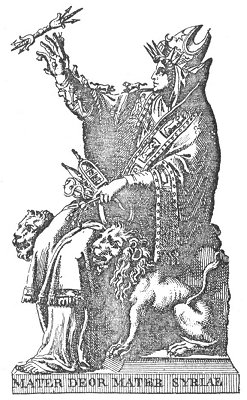These endless emanations of the one First Cause, all of which were gradually transformed by the popular fancy into distinct gods, spirits, angels, and demons, were so little considered immortal, that all were assigned a limited existence. And this belief, common to all the peoples of antiquity, to the Chaldean Magi as well as to the Egyptians and even in our day held by the Brahmanists and Buddhists, most triumphantly evidences the monotheism of the ancient religious systems. This doctrine calls the life-period of all the inferior divinities, “one day of Parabrahma.” After a cycle of fourteen milliards, three hundred and twenty-millions of human years — the tradition says — the trinity itself, with all the lesser divinities, will be annihilated, together with the universe, and cease to exist. Then another universe will gradually emerge from the pralaya (dissolution), and men on earth will be enabled to comprehend SWAYAMBHUVA as he is. Alone, this primal cause will exist forever, in all his glory, filling the infinite space. What better proof could be adduced of the deep reverential feeling with which the “heathen” regard the one Supreme eternal cause of all things visible and invisible.
This is again the source from which the ancient kabalists derived identical doctrines. If the Christians understood Genesis in their own way, and, if accepting the texts literally, they enforced upon the uneducated masses the belief in a creation of our world out of nothing; and
Page 220
moreover assigned to it a beginning, it is surely not the Tanaim, the sole expounders of the hidden meaning contained in the Bible, who are to be blamed. No more than any other philosophers had they ever believed either in spontaneous, limited, or ex nihilo creations. The Kabala has survived to show that their philosophy was precisely that of the modern Nepal Buddhists, the Svabhavikas. They believed in the eternity and the indestructibility of matter, and hence in many prior creations and destructions of worlds, before our own. “There were old worlds which perished.” “From this we see that the Holy One, blessed be His name, had successively created and destroyed sundry worlds, before he created the present world; and when he created this world he said: ‘This pleases me; the previous ones did not please me.’ “Moreover, they believed, again like the Svabhavikas, now termed Atheists, that every thing proceeds (is created) from its own nature and that once that the first impulse is given by that Creative Force inherent in the “Self-created substance,” or Sephira, everything evolves out of itself, following its pattern, the more spiritual prototype which precedes it in the scale of infinite creation. “The indivisible point which has no limit, and cannot be comprehended (for it is absolute), expanded from within, and formed a brightness which served as a garment (a veil) to the indivisible points. . . . It, too, expanded from within. . . . Thus, everything originated through a constant upheaving agitation, and thus finally the world originated.”
In the later Zoroastrian books, after that Darius had restored both the worship of Ormazd and added to it the purer Magianism of the primitive Secret Wisdom — , of which, as the inscription tells us, he was himself a hierophant, we see again reappearing the Zeru-ana, or boundless time, represented by the Brahmans in the chakkra, or a circle; that we see figuring on the uplifted finger of the principal deities. Further on, we will show the relation in which it stands to the Pythagorean, mystical numbers — the first and the last — which is a zero (0), and to the greatest of the Mystery-Gods IAO. The identity of this symbol alone, in all the old religions, is sufficient to show their common descent from one primitive Faith. This term of “boundless time,” which can be applied but to the ONE who has neither beginning nor end, is
Page 221
called by the Zoroastrians Zeruana-Akarene, because he has always existed. “His glory,” they say, is too exalted, his light too resplendent for either human intellect or mortal eyes to grasp and see. His primal emanation is eternal light which, from having been previously concealed in darkness, was called out to manifest itself, and thus was formed Ormazd, “the King of Life.” He is the first-born of boundless time, but like his own antitype, or preexisting spiritual idea, has lived within primitive darkness from all eternity. His Logos created the pure intellectual world. After the lapse of three grand cycles he created the material world in six periods. The six Amshaspands, or primitive spiritual men, whom Ormazd created in his own image, are the mediators between this world and himself. Mithras is an emanation of the Logos and the chief of the twenty-eight izeds, who are the tutelary angels over the spiritual portion of mankind — the souls of men. The Ferouers are infinite in number. They are the ideas or rather the ideal conceptions of things which formed themselves in the mind of Ormazd or Ahuramazda before he willed them to assume a concrete form. They are what Aristotle terms “privations” of forms and substances. The religion of Zarathustra, as he is always called in the Avesta, is one from which the ancient Jews have the most borrowed. In one of the Yashts, Ahuramazda, the Supreme, gives to the seer as one of his sacred names, Ahmi, “I am”; and in another place, ahmi yat ahmi, “I am that I am,” as Jehovah is alleged to have given it to Moses.

Moe is the founder of GnosticWarrior.com. He is a father, husband, author, martial arts black belt, and an expert in Gnosticism, the occult, and esotericism.

